Sittuyin from the Foothills of Burma

Sittuyin
Burmese Chess uses a 64 square, 8x8 game board like our game. Their game board also has two lines running through the long diagonals from corner to corner. These lines are called sit-ke-myin meaning General's Lines. They mark the promotion squares where the pawns are promoted to generals.
Western Chess now dominates in Burma as it does in so many countries but the native variant is still strong in certain regions in the North West. The game gets it's name from the Burmese word Sit which means army or war. Give your thoughts on Sittuyin.
History
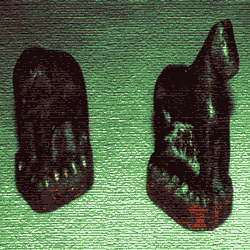
Elephant and Horse
The British ambassador, Major Symes, made the first recorded report by a Westerner around 1800. Doctor Adolf Bastian also made mention of this variant, describing the rules in 1863.
It was around this time that Myan-ma Sit Bayin Lan-nyunt Sa-ok Gyi (Burmese Chess Guide) was published.
Rules - The Pieces

Burmese Chess game with all of the pieces placed and ready to go
Sittuyin has Elephants (Sin), not Bishops. It has the same movement as a General, one square diagonally in any direction. In addition it can also move one square forward. The Horse (Myin) moves just as a Western Knight does. That distinctive L-shaped move of two squares straight in any direction followed by the right-angled turn and one square in that direction. Like the Western Knight, it can jump over any obstructing piece, friend or foe en route to it's destination.
The Chariot (Yahhta) moves just as a Western Rook does, straight in any direction as far as the way is clear. The feudal lord (Ne) moves and captures like a Western pawn, one square straight ahead and capturing an enemy on an adjacent file, one square ahead diagonally. It does not have the initial two-square move as it starts the game in an advanced position.
General Rules
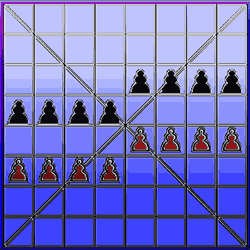
Sittuyin feudal lords are set up in advanced positions
The back row is reserved for the Chariots (Rooks) who must be placed there. A Chariot cannot be placed on the same file as the enemy King unless there is an enemy piece shielding the King. The King, General, Elephants and Horses are then placed wherever behind the pawns.
A piece can be moved on to a square occupied by one of it's own feudal lords. That feudal lord is then placed on the same file behind the piece that took it's place. When a feudal lord reaches a square on the long diagonal with the diagonal line running through it, it can be promoted to a General.
This is only possible if the General has already been captured. The promotion can take place at any time, perhaps several moves later. Promotion is counted as a move. If a feudal lord is moved beyond the promotion square it can never be promoted.
Strategy
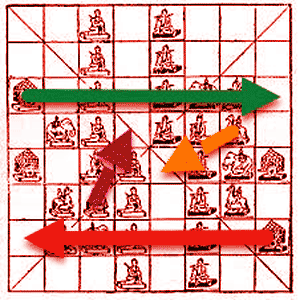
Sittuyin is a slow burning positional game
You need a more positional rather than tactical style. We know that centralization is a big theme in Western Chess. It is also important in this variant. Take over the center and co-ordinate your pieces for mutual support in this goal.
When you have established a positional edge it's time to open the game where it suits your forces best. Your pieces will then flood through the breach into the enemy camp.
Play
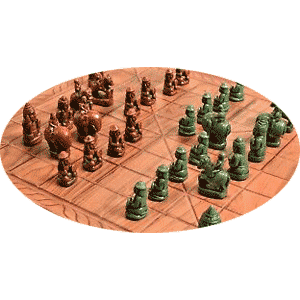
Play Sittuyin
You may want to play against a computer to start with. Later when you find your feet you can face human opponents. This could be the chess variant for you.
Do You Have a Story to Tell on Sittuyin?
Sittuyin is part of Burmese history. It is also a cool part of chess history. Have you played this game? Maybe you've been to Burma and witnessed this game being played. Do you have a great story about this variant? Share it!
Moving On
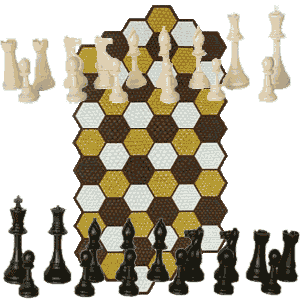
Hexes Chess
There are certain variations in the rules as you move from region to region. So you may want to check the house rules if you ever visit Burma and find yourself playing a game.
We'll be finishing our chess variant world tour with a look at a modern variant of Western Chess. This variant is Hexes Chess.






